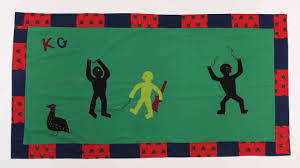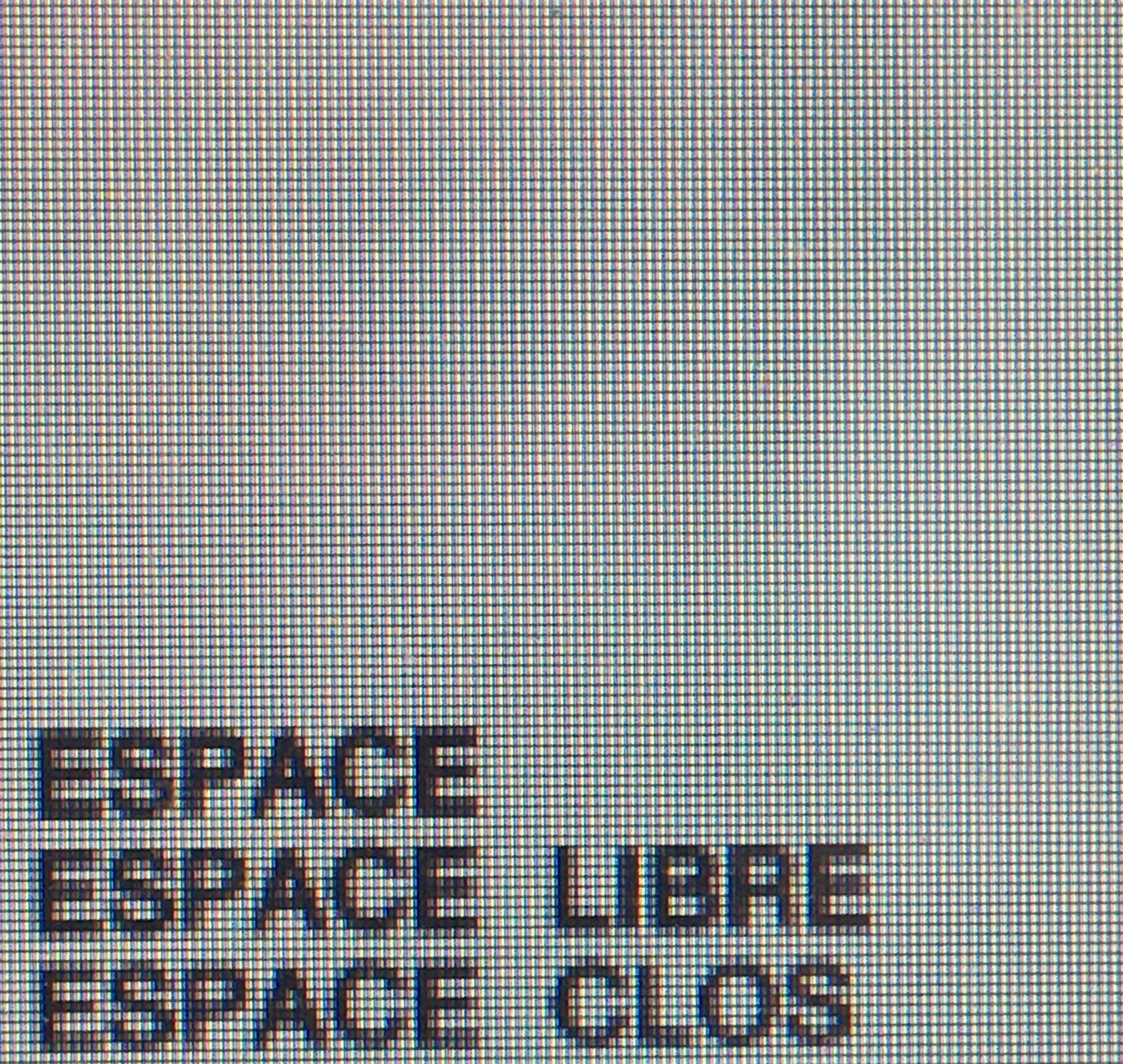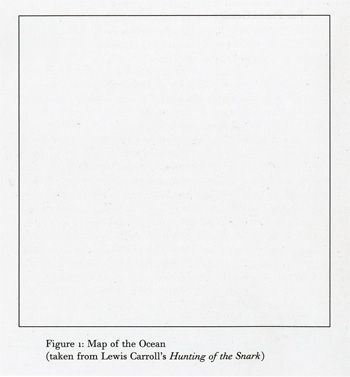Italiano¶
La seguente riflessione è scaturita da un’analisi effettuata attorno i diversi higlights e i incontri avventuti durante il Summer Camp; partorendo un discorso costruito come un patchwork tra tutti gli spunti condividi dal gruppo e dagli ospiti. In particolare abbiamo deciso incentrarce il focus del ragionamento sulla quastione delle subalternità e di come sarebbe possibile un approccio alla pari e costruttivo, provando a ribaltare la visione imposta dalle dinamiche di potere.
Dai vari contributi ricevuti sono emerse delle parole chiave dalle quali si articola il nostro discorso. Prima di esporre la nostra analisi riteniamo sia utile condividere un piccolo glossario per meglio definire il significato del lessico che abbiamo deciso di utilizzare.
- Privilegio: condizione dovuta da differenti fattori quali appartenenza ad una certa classe sociale, provenienza, genere,
- Margine/confine/bordo/interstizio: spazio di possibilità nel quale esplodono le contraddizioni in maniera più evidente; spazio ideale nel quale con le contraddizioni ci si deve conforntare e scontrare. Il margine è abitato da chi sta dentro, e non ha altra scelta e da chi invece, partendo da posizioni di privilegio, decide di starci. Chi ne resta fuori o ne resta indifferente, disconosce invece, il fatto di vivere in una società fatta di contraddizioni.
- Alleanza: quel rapporto biopolitico che si costruisce dentro il margine attuando pratiche di mutua solidarietà, cura e cooperazione, nutrita da istanze di emancipazione e pratiche di partecipazione attiva.
Per unapprofondimeto sul concetto di bordo rimandiamo all’estratto highlight⁄Il bordo metropolitano, (contro)territorializzazione, teoria della barricata mobile.
Partendo dalla definizione di highlight⁄confine1 quello che interessa è analizzare la differenziazione che esiste, nella società occidentale, tra due visioni differenti verso lo stesso. Da una parte domina lo sguardo colonizzatore, capitalista e globalizzato mentre dall’altro coesiste, fortunatamente, una visioone alternativa intesa come alleanza. In questo spazio interstiziale, non esiste nord o sud, ma è presente un riflesso della società contemporanea, in cui le contraddizioni emergono in tutte le sue forme; per esempio “Le differenze salariali internazionali generano flussi asimmetrici di tempo di lavoro incorporato, la cui appropriazione contribuisce al sottosviluppo nella periferia.”2 Concetto ribadito, in altri termini, anche nell’estratto highlight⁄Luxury experience, dove si evidenzia la disparità salariale tra le minoranze.
In questo spazio la posizione da prendere è quella di entrare nel margine, decostruendo lo sguardo comune dominante e proponendo alleanze (qualora ce ne sia il consenso); per inverso la decisione è quella di restarne fuori o, ancora peggio, quella di astrarsi, imponendo una visione privilegiata, perpetuando così logiche predatorie.3
Gli occidentali che amano le opere d’Arte Primitiva hanno sempre pensato che i loro autori sono particolarmente vicini alle «pulsioni fondamentali, elementari ed essenziali della vita»: pulsioni che l’uomo civilizzato condivide, ma «sepolte» sotto la scorza del comportamento indotto. L’idea che l’Arte Primitiva sia una sorta di espressione creativa che sgorga spontaneamente dall’inconscio dell’artista è alla base dei paragoni tra l’Arte Primitiva e i disegni dei bambini, e il suo fondamento razzista è piuttosto chiaro.4
Inoltre la globalizzazione che ha caratterizzato il XXI secolo ha attuato una “tendenza che ha a lungo termine portato all’unificazione culturale e alla ulteriore depersonificazione della creatività degli individui, lasciando in mano alle grandi aziende multinazionali il libero arbitrio per quanto riguarda le politiche cittadine e, allo stesso tempo, il dominio nel settore del mercato dell’arte e quindi della richiesta del pubblico!”5
La riflessione sul margine si potrebbe concludere con uno spunto di analisi geografica socio-politica, usando le parole di Gramsci, riguardo lo stesso spazio che stiamo abitando: Calasetta.
Ogni nome [nella città degli artigiani] era un ramo di vita, era il ricordo di un momento di vita collettiva. La mappa stradale era come un patrimonio di ricordi, di affetti, che legava più fortemente gli individui con i legami di solidarietà attraverso la memoria. La borghesia negoziante ha distrutto questo patrimonio. … Tutti i principi, reggenti, ministri e generali di Casa Savoia hanno avuto il loro posto. … L’enciclopedia ha fornito il resto. La città borghese è cosmopolita, cioè una falsa internazionale, una falsa universalità. … È il trionfo della cosmopoli incolore e insapore.6
Quale potrebbe essere quindi la modalità d’azione? Chi decide di agire il margine dovrebbe proporre alleanze di cooperazione orizzontale con chi nel margine è costretto a starci.7 Questo, per non riprodurre velate forme di colonialismo; usando le parole di Lilla Watson “Se siete venuti per aiutarmi state perdendo tempo, ma se voi siete venuti perché la vostra liberazione è legata alla mia allora lavoriamo insieme”.8
Per liberare il campo e aprirsi a differenti pratiche, è necessario dirigersi verso un ribaltamento dell’educazione eurocentrica e quindi della narrazione dominante ed egemone.
In questa chiave di lettura una delle possibili proposte di prospettive di collaborazione è quella di utilizzare l’arte come strumento d’azione e cooperazione: “L’arte può prendere delle parti di diversi territori e decostruirli per andare oltre.”9
“Non ci sono immagini visive e sonore della vita, ma immagini come vita, una vita già immaginata, attivata e sostenuta dalle immagini. Non c’è prima il pensiero e poi l’immagine. L’immagine o il suono, è una modalità del pensiero.”10
Per avere un breve spunto sulle modalità, preme dire che decidere di stare nel margine presuppone un percorso da intraprendere da chi decide di starci. Nell’estratto delle lettere di Gramsci 1926-27, lui dice che “il cielo sgombero di ogni fumosità cittadina, permette di godersi queste meraviglie - del contesto – con il massimo dell’intensità”.11 Con questa metafora potremmo dire che attraverso un processo di decostruzione (fondamentale) della condizione personale è possibile approcciarsi al margine (condizione collettiva) in maniera meno viziata e propensa al “starci dentro” e “starci con”. A tal proposito per quanto riguarda l’espressione delle pulsioni che arrivano dal bordo non vanno sovra determinate da chi decide di starci. Stare nell’alleanza vuol dire mettersi al servizio di quel linguaggio che è frutto diretto delle pulsioni.12
A proposito di questo, gli esempi possono essere molteplici; collettivi come quelli di Cherimus13 o Guerrilla Spam14, agiscono tutti in questa chiave, ovvero collaborando direttamente con i luoghi e le persone di un dato contesto, in una prospettiva non messianica ma di apprendimento, oltrechè di emancipazione e condivisione.15
Proponendo una prima conclusione a questa riflessione, si può dire che il margine è quello spazio di intersezione tra le differenti lotte e necessità. E che quindi “l’arte permette di viaggiare attraverso – svariati - campi, a differenza di altre discipline” ovvero “solo l’arte ci permette di indagare nel (e oltre il) bordo e questi linguaggi artistici diventano critici.”16
Per usare le parole di Aime:
Nel tempo il significato di cultura ha mutato il suo significato fino agli ultimi decenni in cui ha assunto valenze sociologiche e politiche sempre più sfaccettate fino a episodi spiacevoli in cui politici la evocano come fondamento di identità e le brandisce come arma per escludere i non autoctoni […]. La cultura è la base e allo stesso tempo l’essenza stessa della nostra vita. Determina il nostro agire quotidiano come, così come ha modellato i nostri corpi nel corso dell’evoluzione. La cultura non è solo un supporto della natura umana, ma è il fondamento della sopravvivenza stessa della nostra specie. Facciamone buon uso.17
English: Acting on the fringes - alliances and perspectives¶
The following reflection arose from an analysis carried out around different highlights and encounters that took place during the Summer Camp; giving birth to a conversation constructed like a patchwork between all the ideas shared between the group and the guests. In particular, we decided to focus our reasoning on the question of subordination and how an equal and constructive approach would be possible, trying to overturn the perspective imposed by the dynamics of power.
Our conversation is articulated through some key words which emerged from the various contributions we received. Before presenting our analysis, we believe it is useful to share a small glossary in order to better define the meaning of the lexicon we have decided to use:
- Privilege: a condition provoked by different factors, such as belonging to a certain social class, origin, gender.
- Margin / border / edge / interstice: space of possibility in which contradictions explode in a more evident way; ideal space in which contradictions must be confronted and clashed with. The margin is inhabited by those who are inside, and have no other choice and by those who, starting from positions of privilege, decide to stay there. However, those who remain outside of it or remain indifferent to it, ignore the fact that they are living in a society made up of contradictions.
- Alliance: that biopolitical relationship that is built within the margin by implementing practices of mutual solidarity, care and cooperation, nourished by instances of emancipation and practices of active participation.
For a more in-depth look at the concept of border, we point the reader to the extract highlight⁄Il bordo metropolitano, (contro)territorializzazione, teoria della barricata mobile.
Starting from the definition of the term highlight⁄border we are interested in the distinction that exists in Western society between two different visions towards it. On the one hand, the colonizing, capitalist and globalized vision dominates, while on the other hand, fortunately, there is an alternative vision understood as alliance.
In this in-between space, there is no North or South, but a reflection of contemporary society in which contradictions emerge in all their forms; for example, the “International wage differentials generate asymmetric flows of embedded labor time, the appropriation of which contributes to underdevelopment in the periphery.” cencept repeated, for example, in the highlight⁄Luxury experience highlight, which underlines the wage gap among minorities.2
In this space, the position to take is to enter the margin, deconstructing the dominant common view and propose alliances (if there is a consensus); conversely, the choice is to keep out or, worse, to abstract oneself by imposing a privileged view, thus perpetuating a predatory logic."3
“Westerners who love the works of Primitive Art have always thought that their authors are particularly close to the ‘basic, elementary and essential impulses of life’: impulses that civilized man shares too, but“buried under the shell of induced behaviour. The idea that Primitive Art is a kind of creative expression that springs spontaneously from the artist’s unconscious is the basis of the comparisons between Primitive Art and children’s drawings, and its racist basis is quite clear."4
Moreover, the globalization process that has marked the 21st century has implemented a “trend that in the long run has led to a cultural standardization and further depersonalization of the creativity of individuals, allowing large multinational corporations free reign in regard to civic politics, and at the same time, their domination in the art market, and therefore, in the demand of the public!"5
The reflection on the margin could be concluded with a reference to a socio-political geographical analysis in the words of Gramsci on the same space which we are inhabiting: Calasetta.
“Each name [in the city of artisans] was a branch of life, it was the memory of a moment of collective life. The road map was like a patrimony of memories, of affections which deeply tied individuals to the bonds of solidarity through memory. The merchant bourgeoisie destroyed this heritage. … All the princes, regents, ministers, and generals of the House of Savoy have had their place. … The encyclopedia provided the rest. The bourgeois city is cosmopolitan, that is, a false international, a false universality. … It is the triumph of the colorless and tasteless cosmopolis.6
So what could be the mode of action? Those who choose to act on the margins should propose alliances of horizontal cooperation with those who are forced to remain on the margins.7 This, so as not to reproduce veiled forms of colonialism; in the words of Lila Waston “If you have come to help me, you are wasting your time, but if you have come because your liberation is linked to mine, let us work together”.8
In order to clear the field and open up to other practices, it is necessary to strive for a reversal of Eurocentric education and thus of the dominant and hegemonic narrative.
In this interpretation, one of the possible proposals for perspectives of collaboration is to use art as a tool for action and cooperation.
“Art can take parts of different territories and deconstruct them to go beyond."9
“There are no visual and sound images of life, but images as life, a life already imagined, activated and supported by images. There is no thought first and then the image. Image or sound is a modality of thought."10
To give a brief indication of the modalities, it is important to say that the decision to stay on the edge presupposes a path that the one who decides to stay there. In the excerpt from Gramsci’s letters 1926-27, he says that “the sky freed from all the smokiness of the city, allows to enjoy these wonders - of the context - with maximum intensity”.11 With this metaphor, we could say that through a process of (fundamental) deconstruction of the personal condition, it is possible to approach the edge (of the collective condition) in a manner that is less spoiled and more inclined to “staying in” and “staying with”. In this regard, when it comes to expressing the urges that come from the edge, these should not be overdetermined by those who choose to stay there. To remain in alliance is to put oneself at the service of that language which is the direct result of such urges.12
There are many examples of this: collectives such as Cherimus13 or Guerrilla Spam14 all operate in this key or through direct collaboration with the places and people of a particular context, in a perspective that is not messianic, but one of learning, as well as of emancipation and sharing.15
As a first conclusion based on these reflections, we can say that the margin is the space of intersection between different struggles and needs. And that therefore “art allows us to travel through - different - fields, unlike other disciplines” or “only art allows us to research in (and beyond) the margin and these artistic languages become critical."16
To use Aime’s words:
Over time, the meaning of culture has changed, until recent decades when it has taken on increasingly diverse sociological and political values, to the point of unpleasant episodes when politicians invoke it as a source of identity and use it as a weapon to exclude non-natives […]. Culture is both the foundation and the essence of our lives. It determines our daily actions just as it has shaped our bodies in the course of evolution. Culture is not only a pillar of human nature, but it is the basis for the very survival of our species. Let us take advantage of it.17
Photos¶

…

…

…

…
-
L’etimologia di con-fino è legata al termine confine, cioè cum+finis, nel limite. Stare nel limite signifia, stare in un orizzonte allo stesso tempo di separazione e di contatto. ↩︎
-
Piero Gilardi, Compost. Riflessioni sull’ecocentrismo, K-pocket guide Kabul Magazine, 2017 ↩︎
-
Intervento di Lucrezia Cippitelli al MAC - Museo di Arte Contemporanea di Calasetta il 29/08/2021 ↩︎
